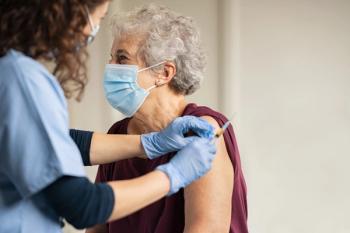Genentech announced positive topline results from the phase 4 ELEVATUM (NCT05224102) study, which evaluated faricimab-svoa (Vabysmo) for the treatment of diabetic macular edema (DME) in patients from racial and ethnic groups that are often underrepresented in clinical trials. The data were presented as a late-breaking oral presentation at the American Academy of Ophthalmology 2024 Annual Meeting.1
“Vabysmo has been shown to be an effective first-line treatment for diabetic macular edema, and for the first time, we now have data demonstrating its ability to improve vision in Black, African American, Hispanic, and Latino patients who are disproportionately impacted by this condition,” Jeremiah Brown, MD, of Retina Consultants of Texas, said in a news release. “As a clinician who serves patients from these communities, I felt it was important to take part in this groundbreaking study and hope the findings will inform and improve the care we provide to our patients in the clinic daily.”1
The study was designed to investigate the drug for patients who are treatment-naïve with DME and are underrepresented in clinical trials. Individuals included were 18 years and older and self-identified as Black/African American, Hispanic/Latino American, Native American, Alaska Native, Native Hawaiian, or Pacific Islander, according to the clinical trial data. Furthermore, there was another cohort of Asian Indian patients enrolled in India.2
Individuals included in the study also were diagnosed with either type 1 or type 2 diabetes and a hemoglobin A1C of 10% or less, however, 20% of individuals may have had up to 12%. For the ocular phase of the study, individuals were intravitreal treatment-naïve in the study eye, had DME, and a best corrected visual acuity (BCVA) letter score of 73 to 20 letters at baseline. For the long-term extension inclusion, enrollment and completion of the main study without discontinuation was required.2
In the main study, individuals received faricimab-svoa 6 mg intravitreal once every 4 weeks up to week 20, followed by 6 mg injections once every 8 weeks up to 52 weeks, according to the study information. The long-term extension included 6 mg injections according to the personalized treatment interval dosing algorithm, with the minimum and maximum being every 4 weeks and every 24 weeks.2
About the Trial
Trial Name: A Study to Investigate Faricimab Treatment Response in Treatment-Naive, Underrepresented Patients With Diabetic Macular Edema (ELEVATUM)
ClinicalTrials.gov ID: NCT05224102
Completion Date (Estimated): November 2026
The primary outcome for the long-term extension phase included the incidence and severity of ocular adverse events (AEs) from day 1 until the end of the extension (up to 100 weeks) and incidence and severity of non-ocular AEs.2
The initial data included 124 individuals in the United States. The findings showed that after 1 year of treatment, individuals could read an additional 12.3 letters on average, which is equivalent to 2.5 lines on the eye chart. Further, the results were similar for racial and ethnic groups, with Hispanic and Latino individuals gaining an average of 14.1 letters at 1 year and African American and Black individuals gaining an average of 11.3 letters at 1 year.1
The investigators also reported that the drug was well-tolerated with no new safety events identified, and the results were consistent with those in seen in the phase 3 YOSEMITE (NCT03622580) and RHINE DME (NCT03622593) studies.1
REFERENCES
1. Genentech’s Vabysmo Improved Vision in Underrepresented Populations With Diabetic Macular Edema (DME) in a First-Of-Its-Kind Study. News release. Genentech. October 18, 2024. Accessed October 28, 2024. https://www.gene.com/media/press-releases/15041/2024-10-18/genentechs-vabysmo-improved-vision-in-un
2. A Study to Investigate Faricimab Treatment Response in Treatment-Naive, Underrepresented Patients With Diabetic Macular Edema (ELEVATUM). ClinicalTrials.gov identification: NCT05224102. Updated October 23, 2024. Accessed October 28, 2024. https://www.clinicaltrials.gov/study/NCT05224102





















































































































































































































